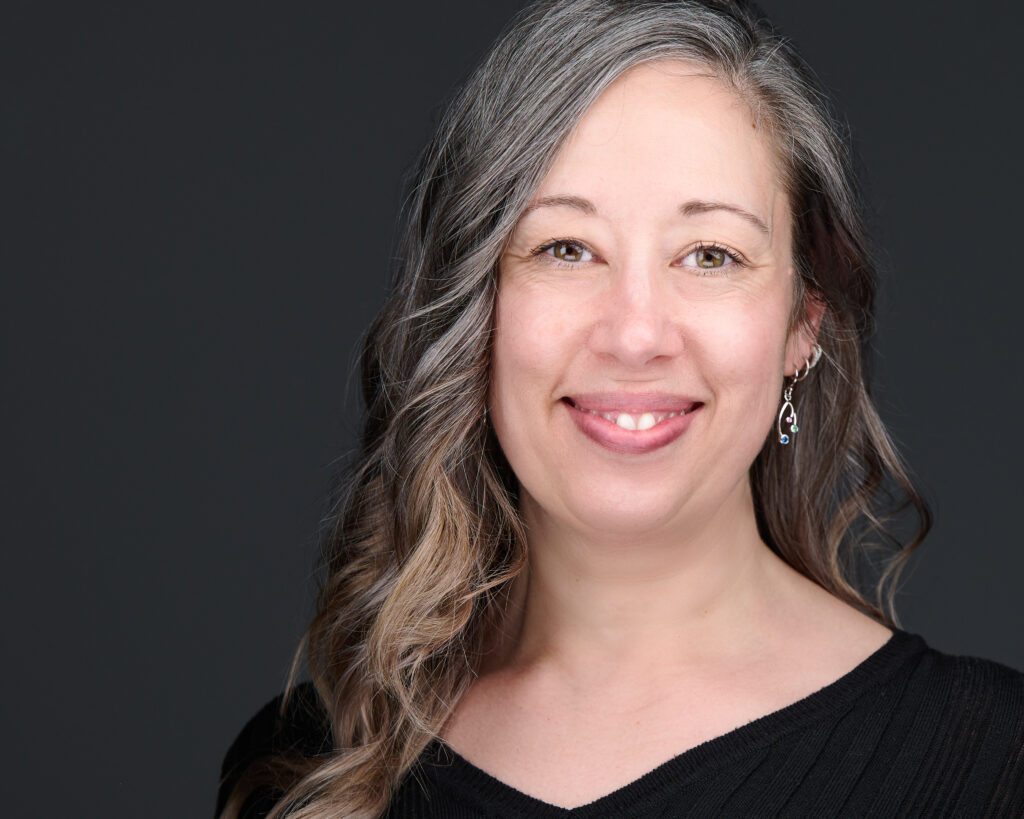Community Profile: Heather Skeels uses data to help health centers tackle their biggest challenges
January 22, 2024
People
For lifelong Vermonter Heather Skeels, problem-solving is one of the most rewarding aspects of her job. “I love that I get to solve problems, and it’s never the same problem,” says Heather, director of the Vermont Rural Health Alliance (VRHA), a program at Bi-State Primary Care Association, whose mission is to advance access to comprehensive primary care services, with special emphasis on those most in need in Vermont and New Hampshire.
“There is always something interesting about this work,” she adds. “There’s new science all the time that tells us things.” For example, Heather had a “lightbulb moment” when she realized the power of data to help support breast cancer surveillance efforts in the state, in particular for young Black women, who have double the mortality rate from breast cancer than white women.
“Those kinds of things, we can figure out from [race and ethnicity] data,” Heather explains. In this case, what do we know from the data and what is the impact? Black women can benefit from earlier mammograms.
Serving FQHCs’ health data needs & solving health problems
Bi-State, where Heather has worked for 21 years, serves federally qualified health centers (FQHCs) in Vermont and New Hampshire. She’s joined in this effort by her colleagues Kate Simmons, senior director of operations; Kristen Bigelow-Talbert, senior manager of health quality; Lauri Scharf, senior informatics manager; Nicol Dorciak, facilitator data and engagement, and Clem Noone, program assistant.
As a team, they provide training and technical assistance to improve programmatic, clinical, and operational work, in addition to the financial performance of the FQHCs.
“All things digital.” That’s how Heather describes VRHA’s work. “We help [FQHCs] understand how to read data and determine what the data is trying to tell them, understand the changes clinical staff makes to the data, annual reporting — all those kinds of things.”
Interpreting data to solve health problems is central to Bi-State and VRHA’s work. Where are the gaps in care? Where are there significant access issues? What specific populations are being impacted in a certain way and why? For example, Heather shares, “If a clinician is looking back at patients who were pregnant within the last year and wants to understand the impact of depression on those patients, we can look into how many patients delivered within the year who also had a PHQ-2 or a PHQ-9 screening. These are very specific tests but also the kind of specific information they need that we can look into and provide an answer to.”
Heather and her team also do a lot of workflow development with the health centers called “pit stops.” “We go in and say ‘Oh, we see you’re having a problem with X. Well, let us help you figure out how to solve X, and then we’ll get out.’ We are the pit crew in a race. They pull into the pit, we fix up their car, we change the tires, give them a drink of water, and then we send them out and they win the race,” she explains.
Getting the process right on behalf of FQHCs — without getting in the way — that’s the shared goal of Heather and her team. Bi-State’s work on data interpretation and other projects is a piece of the puzzle, but as Heather explains, “it’s an important piece that the health center’s staff often does not have time to do in their daily lives because they are working with patients.”
“We’re not doing that,” she adds. “We’re in a position where we can look at more global things and take a step back and have time to be curious. They’re busy doing a very good job of caring for their communities; we have time to be curious about this data.”
Partnership with VITL that spans more than a decade
Anticipating what the health care centers need — understanding what the pressures are, figuring out where they can make a difference — is a big part of Heather and her team’s work and one of the reasons they partner with VITL. The health data utility has been Bi-State’s partner for more than a decade.
The COVID-19 vaccine data obtained from VITL was crucial for FQHCs. It helped identify high-risk individuals in the community and track vaccine doses and boosters for each person. This enabled Bi-State to monitor completed vaccinations and share this information with the health centers so they could plan for and administer correct boosters and report to the government. (The U.S. Health Resources and Services Administration requires monthly reports from FQHCs, including vaccination information by race and ethnicity.) Accessing vaccination files from the VITL registry allows health centers to easily determine which of their patients have been vaccinated, even if they received the vaccine outside their own facility.
“We’re doing groundbreaking work in Vermont — many states don’t have a health information exchange,” says Heather. “They don’t have any way to coordinate this information centrally and say, ‘You know who should get the immunization data, the central people so that there’s one place to go,’ which is a big deal. It’s really helpful.”
“I get to help patients and our communities; that’s really important. We’re making life better for Vermonters by looking at this data.”
When Heather is not working with her team to tackle the community’s health care challenges, you can find her on her Peloton. She’s an avid indoor cyclist and a certified spin instructor. Paddleboarding is also not off the table. “I like to paddleboard in the summer. So for those three days when the water is warm enough and the birds outnumber the mosquitoes, I like to get out on my paddleboard.”
To learn about Bi-State Primary Care Association and the impact of federally qualified health centers, visit bistatepca.org/.